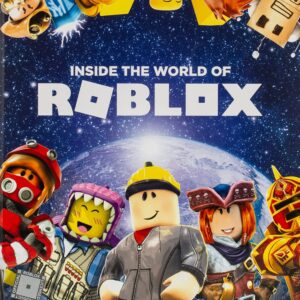Harvesting Hope: How a New Post-Apocalyptic Farming Sim Reinvents Survival
Popular Now
 Call of Duty
Call of Duty
 Roblox
Roblox
 Geometry Dash
Geometry Dash
 The Legend of Zelda
The Legend of Zelda
 Minecraft
Minecraft
 Free Fire
Free Fire
 Free Fire Max
Free Fire Max
 Schedule I
Schedule I
 Candy Crush Saga
Candy Crush Saga
 Poppy Playtime
Poppy Playtime 
The gaming landscape is saturated with survival games where players scrounge, scavenge, and fight for every scrap of a living. But what if the key to survival wasn’t a bigger gun or a more fortified bunker, but a single, thriving crop? A new wave of games is proving that the most potent tool in a wasteland isn’t a weapon—it’s a hoe. The recently released Green Haven, a post-apocalyptic farming simulation, brilliantly subverts the genre’s expectations, placing the humble act of agriculture at the center of its bleak, yet beautiful, world. It’s a high-stakes, high-reward game that asks a crucial question: in a world without civilization, how much value does a single seed truly hold?
 More Than a Side Quest: The Life-or-Death Importance of Crops
More Than a Side Quest: The Life-or-Death Importance of Crops
In most survival titles, farming is a secondary mechanic, a way to supplement your diet while you’re out exploring. Green Haven elevates it to the core gameplay loop. The game’s world, ravaged by an ecological disaster, has made fertile land a rare and precious commodity. Every seed you find is a treasure, and every crop you successfully grow is a victory against the elements. The survival elements aren’t just about hunger and thirst; they are intricately tied to the health of your farm. A pest infestation or a crop blight can mean the difference between a bountiful harvest and starvation. The game’s deep, realistic soil and plant mechanics force players to become true botanists, understanding nutrient cycles, pH levels, and the delicate balance of a thriving ecosystem. This creates a compelling and tense gameplay loop that is far more strategic than simply planting and waiting.
The post-apocalyptic setting provides a unique twist on the cozy, low-stress feel of traditional farming sims. You are not just growing carrots for a festival; you are growing them to barter for medical supplies or to feed a sick ally. This adds a powerful narrative and emotional weight to every decision you make. The risk-reward system is constantly at play: do you use your last seeds to try and grow a high-value, rare crop, or do you stick to the basics to ensure a guaranteed food supply? The pressure is real, and the consequences of failure are severe, making every successful harvest feel like a monumental achievement.
The Seeds of Community and Economic Power
Beyond the survival mechanics, Green Haven introduces a dynamic, player-driven economy that revolves entirely around agricultural goods. In this world, the true currency is food, and players who master farming become the most powerful and influential figures. The game’s multiplayer hub, a semi-safe zone called The Hub, functions as a black market where players can trade surplus crops for rare tools, weapons, or even valuable information about the outside world. This creates a thriving, player-driven marketplace where a rare strain of mutant corn can be a high-value commodity, and a master farmer is a sought-after partner for any dangerous expedition.
This economic aspect is a brilliant piece of design. It encourages collaboration and specialization. One player might focus on crafting and base building, while another specializes in rare-crop cultivation. They then rely on each other for survival, forming a true symbiotic relationship that is rare in the genre. This focus on cooperation and community-building sets Green Haven apart from other, more solitary survival games. It shows that in the face of annihilation, humanity’s greatest strength isn’t brute force, but the ability to work together and nurture life from the ashes.
Green Haven is a powerful reminder that “survival” doesn’t always mean fighting hordes of monsters. Sometimes, it means painstakingly tending to a small patch of land, protecting it from the harsh world, and watching as a tiny sprout pushes through the soil. In the end, it’s not about how you survive, but what you choose to live for.









 More Than a Side Quest: The Life-or-Death Importance of Crops
More Than a Side Quest: The Life-or-Death Importance of Crops